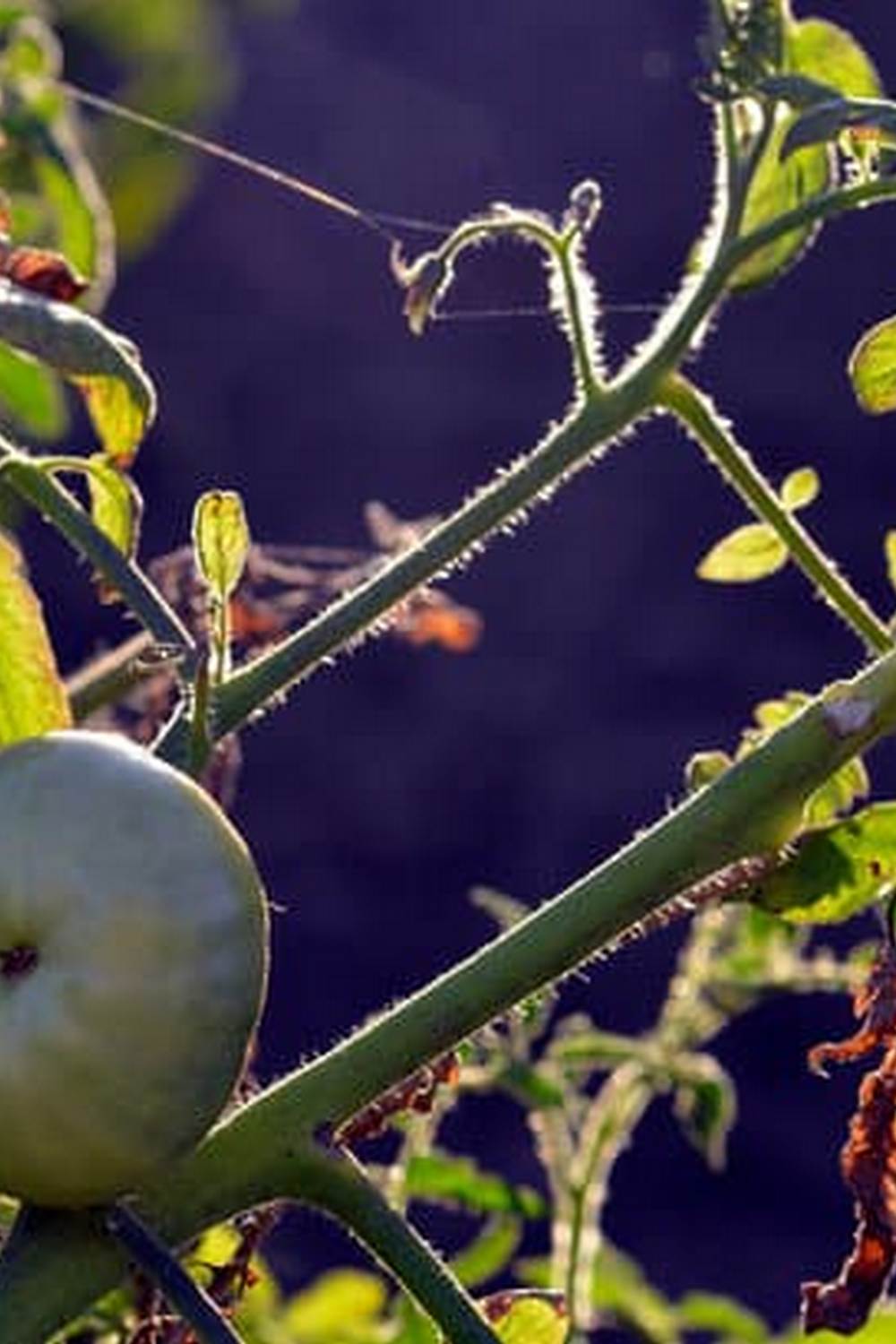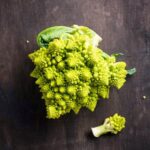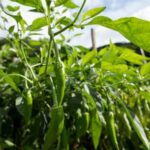Nutsedge control in vegetable gardens is a challenge faced by many gardeners. Understanding the nature of nutsedge, as well as its impact on vegetable gardens, is crucial in effectively managing this pesky weed. Nutsedge, also known as nutgrass or watergrass, is a perennial weed that can quickly overrun vegetable gardens if left unchecked. Its rapid growth and ability to outcompete crops for nutrients and water make it a significant problem for gardeners.
Identifying nutsedge in your garden is the first step towards controlling it. Distinguishing nutsedge from other weeds or plants can be tricky, but it is essential for targeted control methods. Once nutsedge takes hold in a vegetable garden, it can significantly reduce crop yields and cause frustration for gardeners. Understanding the impact of nutsedge on vegetable gardens will highlight the need for effective control measures.
In the upcoming sections of this article, we will explore cultural and chemical control options for managing nutsedge in vegetable gardens. From best practices to preventing re-establishment and organic control methods, we will provide comprehensive guidance for successfully addressing the challenge of nutsedge in your vegetable garden.
Identifying Nutsedge in Your Garden
Nutsedge, also known as nutgrass, is a persistent and troublesome weed that can wreak havoc in vegetable gardens. It is important for gardeners to be able to identify this invasive plant in order to effectively control it and prevent it from competing with crops and reducing yield.
Here are some key characteristics to help you distinguish nutsedge from other weeds or plants in your garden:
1. Growth Habit: Nutsedge typically grows faster than most other plants in the garden. Its grass-like leaves are arranged in sets of three on a triangular stem, which helps to differentiate it from other grassy weeds or plants.
2. Root System: Nutsedge has an extensive and dense root system with tubers, or nutlets, that can be found in the soil. These nutlets are key to the plant’s ability to regrow even after being removed from the garden.
3. Yellowish-Green Color: The leaves and stem of nutsedge often have a yellowish-green hue compared to other greenery in the garden, making it easier to spot once you know what to look for.
It is crucial for gardeners to accurately identify nutsedge as early as possible in order to prevent it from spreading and taking over the vegetable garden. By understanding its distinct characteristics, you can take proactive steps towards controlling its growth and minimizing its impact on your crops.
By familiarizing yourself with these distinguishing features, you can effectively spot and address nutsedge control in your vegetable garden before it becomes a larger issue.
The Impact of Nutsedge on Vegetable Gardens
Nutsedge, also known as nutgrass, is a troublesome weed that can significantly impact vegetable gardens. This fast-growing perennial weed competes with crops for water, sunlight, and nutrients, ultimately reducing the yield of your vegetables. Its ability to spread rapidly through rhizomes and tubers makes it essential for gardeners to understand the impact of nutsedge on their vegetable gardens.
Competition With Crops
Nutsedge thrives in moist and warm conditions, making it particularly problematic for vegetable gardens. Its rapid growth allows it to outcompete vegetable crops for resources, leading to stunted growth and decreased productivity. Additionally, the presence of nutsedge can make it challenging to cultivate the soil and properly care for your vegetables.
Reduction in Yield
The presence of nutsedge in vegetable gardens can result in a significant reduction in overall yield. This invasive weed can overcrowd vegetable plants, reducing spacing and access to essential resources like water and nutrients. As a result, vegetables may not reach their full potential, thus diminishing the overall harvest of the garden.
Impact on Garden Aesthetics
In addition to its impact on crop yield, nutsedge can also detract from the aesthetic appeal of the garden. Its rapid growth and tendency to form dense patches can create an unsightly appearance in what should be a well-maintained and thriving vegetable garden. Addressing nutsedge infestations is crucial not only for maximizing productivity but also for maintaining an attractive outdoor space.
Understanding how nutsedge competes with crops and reduces yield is crucial for implementing effective control strategies in vegetable gardens. By addressing this impact head-on, gardeners can work towards mitigating the detrimental effects of this persistent weed on their precious crops.
Cultural Control Methods
When it comes to managing nutsedge in vegetable gardens, cultural control methods are a valuable tool for gardeners who prefer to avoid using chemicals. These strategies focus on altering the growing conditions in the garden to reduce the presence of nutsedge and minimize its impact on vegetable crops.
Improving Soil Drainage
Nutsedge thrives in wet or poorly drained soils, so improving soil drainage can help deter its growth. One way to achieve this is by incorporating organic matter, such as compost, into the soil to improve its structure and water retention capacity. Additionally, raised beds can be utilized to provide better drainage and prevent waterlogging, which creates an unfavorable environment for nutsedge.
Practicing Crop Rotation
Implementing a crop rotation plan can disrupt the lifecycle of nutsedge and reduce its prevalence in the garden. By rotating crops from year to year, you can limit the availability of nutrients and resources that nutsedge relies on for growth. Be sure to avoid planting susceptible crops in an area where nutsedge has been prevalent in previous seasons.
Mulching
Mulching with organic materials like straw or wood chips can suppress nutsedge growth by blocking sunlight and hindering its ability to germinate and establish itself in the soil. A layer of mulch also helps conserve moisture and regulate soil temperature, creating less favorable conditions for nutsedge.
By employing these cultural control methods, gardeners can effectively manage nutsedge without resorting to chemical means. These strategies not only contribute to sustainable gardening practices but also promote a healthier growing environment for vegetable crops.
Chemical Control Options
When cultural control methods are insufficient to manage nutsedge in your vegetable garden, chemical herbicides can be an effective solution. It is important to note that using herbicides should be a last resort, and other control methods should be considered first. However, if the infestation is severe and non-chemical methods have been unsuccessful, herbicides can provide an efficient means of controlling nutsedge.
One of the most commonly used herbicides for nutsedge control in vegetable gardens is sulfentrazone. This herbicide works by inhibiting the growth of nutsedge roots and shoots, effectively limiting its ability to compete with vegetable crops. Sulfentrazone is typically applied as a pre-emergent or post-emergent treatment, depending on the stage of nutsedge growth and the specific product used.
Another effective option for chemical control is halosulfuron-methyl. This herbicide targets both yellow and purple nutsedge, making it a versatile choice for vegetable gardens with multiple varieties of the weed. Halosulfuron-methyl works by interfering with nutsedge’s ability to produce essential amino acids, ultimately leading to its demise.
It is crucial to carefully follow the instructions provided by the herbicide manufacturer when using any chemical control method. Proper application, timing, and dosage are key factors in achieving successful nutsedge control without causing harm to desirable plants or the environment.
| Herbicide | Mode of Action |
|---|---|
| Sulfentrazone | Inhibit growth of roots and shoots |
| Halosulfuron-methyl | Interfere with essential amino acid production |
Best Practices for Nutsedge Management
When it comes to managing nutsedge in vegetable gardens, there are several best practices that can help you effectively control this persistent weed. Here are some tips and techniques for successful nutsedge management:
1. Regular Cultivation: One of the most effective cultural control methods for nutsedge is regular cultivation of the soil. By regularly tilling the soil, you can disrupt the growth of nutsedge tubers and rhizomes, preventing them from establishing and spreading.
2. Mulching: Applying a thick layer of organic mulch can help suppress nutsedge growth by blocking out light and reducing weed germination. Mulching also helps retain soil moisture, which can benefit your vegetable crops while inhibiting the growth of nutsedge.
3. Hand Pulling: While hand pulling may not be practical for large infestations, it can be an effective way to manage nutsedge in smaller garden areas. Be sure to remove as much of the underground tubers and rhizomes as possible to prevent regrowth.
4. Proper Irrigation: Nutsedge thrives in moist conditions, so proper irrigation practices can help minimize its growth. Avoid overwatering your vegetable garden, and consider using drip irrigation or soaker hoses to deliver water directly to your crops while minimizing moisture around nutsedge plants.
Implementing these best practices for nutsedge management in your vegetable garden can help you achieve successful control without relying on chemical herbicides. By combining these techniques with proper identification and understanding of nutsedge behavior, you can effectively reduce its impact on your vegetable crops and improve overall yield.
Preventing Nutsedge Re-Establishment
Nutsedge, also known as nutgrass, is a persistent and troublesome weed that can wreak havoc in vegetable gardens. Its fast growth rate and ability to compete with crops for nutrients and water make it a significant problem for gardeners. Understanding the characteristics of nutsedge is crucial in developing effective control strategies to prevent its re-establishment in your garden.
One of the key steps in preventing nutsedge re-establishment is to remove the plants before they have a chance to produce new tubers. Even though nutsedge can be difficult to eradicate completely, consistent removal of the plants can help reduce their numbers over time. Hand pulling or digging out the roots, making sure to remove all tubers, is a labor-intensive but effective method.
Another important tactic for minimizing nutsedge re-establishment is to create an environment that is less favorable for its growth. This includes proper irrigation practices that promote deep rooting of desired plants while keeping the soil surface dry, which makes it less hospitable for nutsedge growth. Additionally, maintaining healthy and dense crop canopies through proper fertilization and spacing will help shade out nutsedge and reduce its ability to compete with vegetable crops.
Finally, regular monitoring and prompt action are essential for preventing nutsedge from taking over your garden. If you spot any emerging nutsedge plants, it’s important to take immediate action to remove them before they have a chance to mature and produce tubers that can perpetuate their growth.
| Prevention Method | Benefits |
|---|---|
| Hand pulling or digging out roots | Effective at reducing nutgrass numbers over time |
| Promoting dry soil surface | Makes soil less favorable for nutgrass growth |
| Maintaining healthy crop canopy | Shades out nutgrass and reduces competition with vegetables |
Organic Nutsedge Control Methods
In conclusion, managing nutsedge in vegetable gardens can be a challenging task, but there are several effective methods for control. By understanding the nature of nutsedge and its impact on vegetable gardens, gardeners can better identify and address this persistent weed. Cultural control methods, such as mulching and hand pulling, offer a non-chemical approach to managing nutsedge, while chemical options provide an additional tool for more aggressive control.
In addition to these traditional control methods, organic nutsedge control methods offer environmentally-friendly approaches to managing this troublesome weed in vegetable gardens. Solutions such as solarization and using organic herbicides can help minimize the impact on the surrounding environment while still effectively controlling nutsedge. This is especially important for those who are concerned about using chemical herbicides in their gardening practices.
By implementing a combination of cultural, chemical, and organic methods, gardeners can take a comprehensive approach to nutsedge control in vegetable gardens. It is also crucial to focus on preventing re-establishment of nutsedge by maintaining good garden practices and being proactive in addressing any new outbreaks. With diligence and the right strategies in place, controlling nutsedge in vegetable gardens is achievable without causing harm to the surrounding environment or the crops being grown.
Frequently Asked Questions
How Do You Kill Nutsedge Without Killing Plants?
Killing nutsedge without harming other plants can be challenging, but it is possible. One method is to spot-treat the nutsedge with a specific herbicide, being careful to avoid spraying or applying it onto desirable plants.
Will Nutsedge Killer Kill Plants?
Nutsedge killer products are designed to target nutsedge specifically, but some may have adverse effects on other plants if not used properly. It’s crucial to read and follow the instructions and use them cautiously around desirable plants.

If you’re looking to get into vegetable gardening, or are just looking for some tips on how to make your current garden better, then you’ve come to the right place! My name is Ethel and I have been gardening for years. In this blog, I’m going to share with you some of my best tips on how to create a successful vegetable garden.





